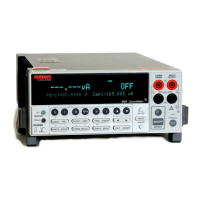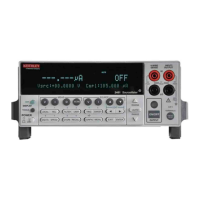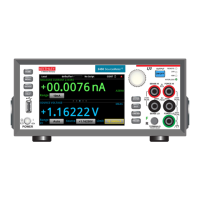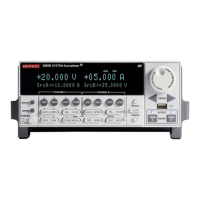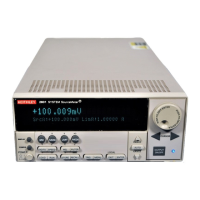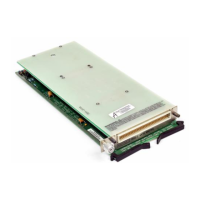2400S-903-01 Rev. E / September 2011 Return to Section Topics 1-19
Series 2400 SourceMeter® Quick Start Guide Section 1: Introduction
Moving filter
The first reading conversion is placed in the stack, and is copied to the other stack locations to fill
it. Therefore, the first filtered reading is the same as the first reading conversion. The stack type is
first-in, first-out. Each subsequent conversion replaces one of the copied readings in the stack,
which is then averaged to yield the next filtered reading. Note that as this process continues, a true
average is not yielded until the stack is filled with new reading conversions (no copies in stack).
Once the stack is filled, each subsequent conversion placed into the st
ack replaces the oldest
conversion. The stack is re-averaged, yielding a new filtered reading.
Response time
Filter type and count have the following effects on the time needed to display, store, or output a
filtered reading:
• Filter type: The moving filter type yields faster filtered readings since it doesn’t have to re-fill
the entire stack (as is the case for the repeating filter).
• Filter count: Speed and accuracy are trade-of
fs. T
ypically, you will want to apply just enough
filtering to achieve acceptably stable readings.
Filter configuration
Filter type — Use the following menu sequence to select filter type:
Press CONFIG > press FILTER > select AVERAG
E MODE > select MOVING or REPEAT
Filter count — Us
e the following menu sequence to select the amount of filtering:
Press CONFIG > press FILTER > select AVERAG
E COUNT, set count value (1 to 100)
Rel (nulling offsets)
The rel (relative) feature allows you to null offsets. With the offset displayed (measured), enabling
rel acquires the offset reading as the rel value and zeroes the display as follows:
Displayed Reading = Actual Input - Rel Value
Since the actual input (offset) and the rel value are th
e same, the displayed reading is zero.
Rel is enabled by pressing the REL key (REL annunciator on). Pressing REL a second time
disa
bles it. Perform the following steps to null out an offset:
1. Connect your test circuit to the SourceMeter.
2. Select the source function that you are going to use for your test.
3. Select the lowest source range and set the source level to zero.
4. Select the measure function that you are going to use for your test, and select the lowest
range.
5. Turn the output on to measure the offset.
6. With the offset reading displayed, press REL (REL annunciator on) to zero the display. Turn
the output off and configure the selected source and measure functions for your test.
7. Turn the output back on. The displayed test readings will not include the nulled offset.
8. When finished, turn the output off.
If the offset drifts, disable rel and repeat the above procedure to null out the new offset.

